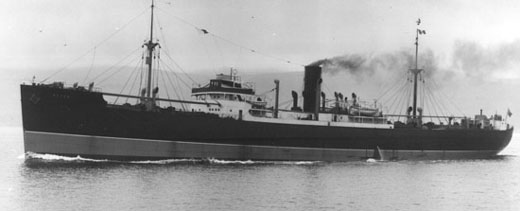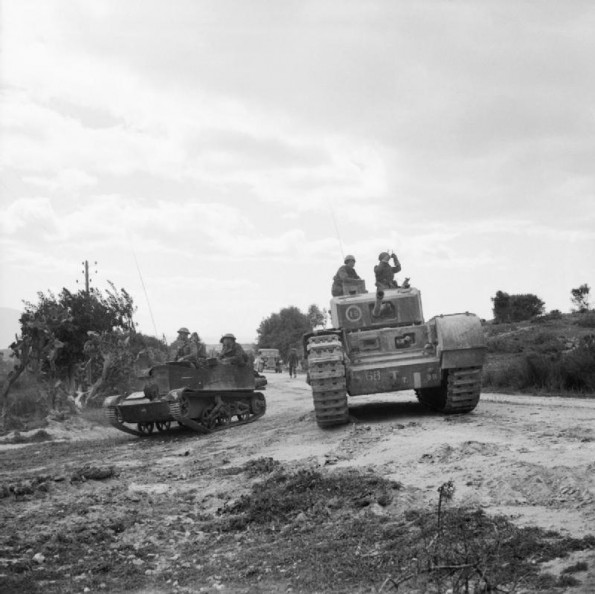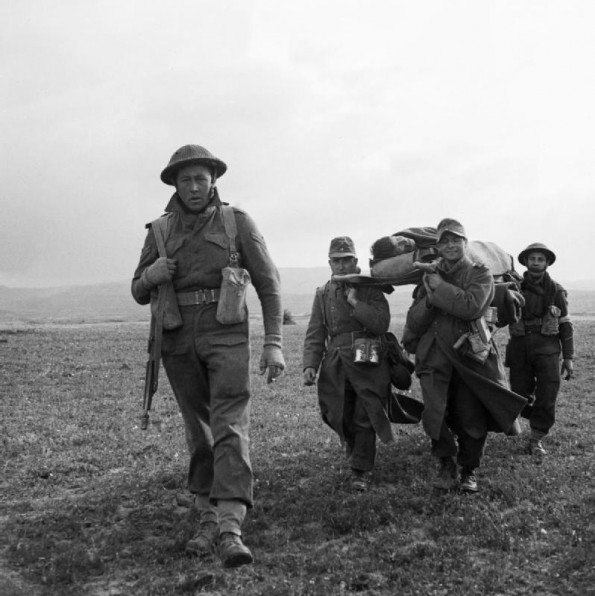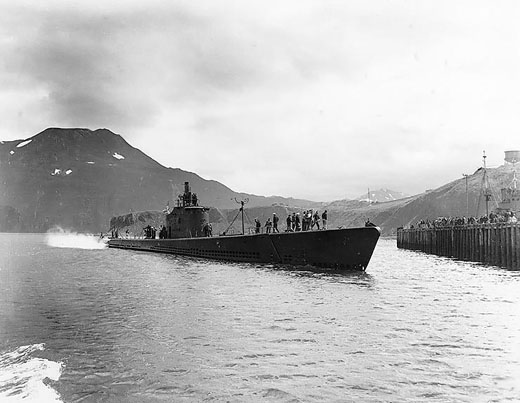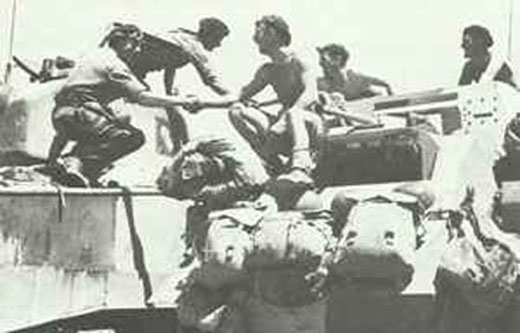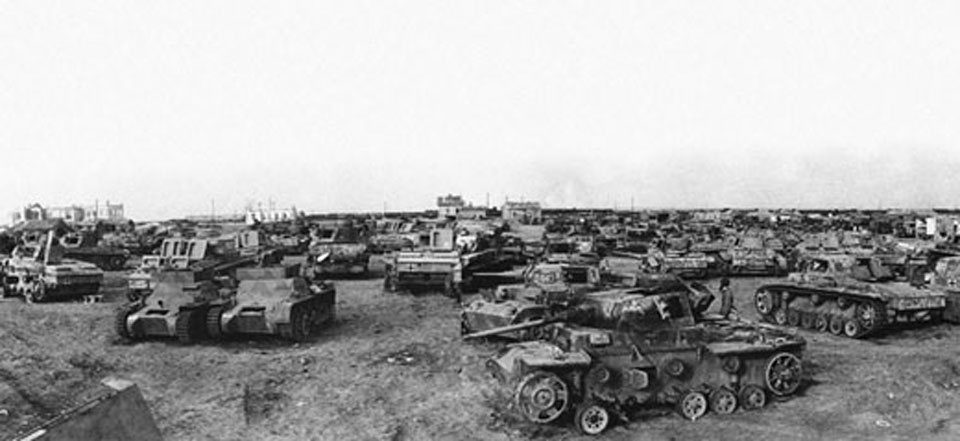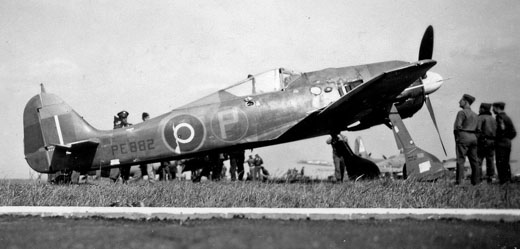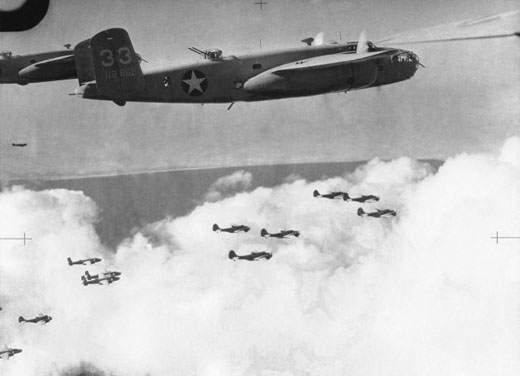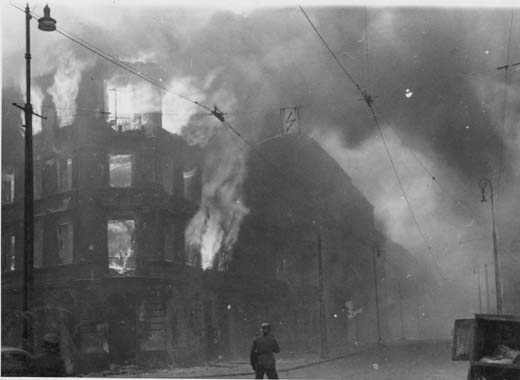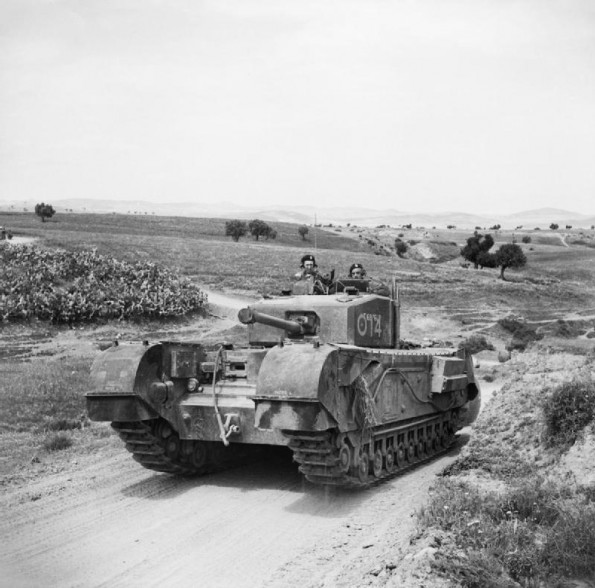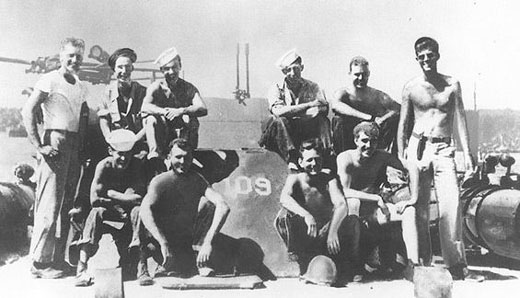Air Operations, Aleutians
16 28th Composite Bomb Group B-24s, 5 B-25s, and 12 343rd Fighter Group P-38s attack Kiska.
[Air Operations, CBI
BURMA- 16 341st Medium Bomb Group B-25s attack rail facilities at Maymyo.
- 8 B-25s attack rail facilities at Ywataung.
- After strafing Hengyang Airfield without opposition, 9 Ki-43 'Oscar' fighters fly on to Lingling Airfield, where they are challenged by P-40s of the 23rd Fighter Group’s 75th Fighter Squadron. 5 'Oscars' Ki-43s are shot downt at Lingling and 2 others apparantly go down along the return flight to their base. 1 P-40 with its pilot are lost.
Air Operations, Europe
BOMBER COMMANDDaylight Ops:
- 12 Mosquitos bomb a power station and the railway yards at Trier.
- A lone Lancaster of No. 103 Squadron piloted by Squadron Leader C. O'Donoghue is sent to bomb the town of Emmerich just over the German border. The plane is shot down over Holland and all the crew are killed.
Air Operations, Bismarcks
43rd Heavy Bomb Group B-17s attack a Japanese convoy off Kavieng, New Ireland, and mount attacks against the Cape Gloucester and Gasmata airfields on New Britain. 1 Japanese Navy transport is sunk and a heavy cruiser and a destroyer are damaged.
[Air Operations, East Indies
V Bomber Command B-25s, in strike groups ranging from 1 to 3 planes, attack coastal shipping and shore targets of opportunity over a wide area.
[Air Operations, New Guinea
V Bomber Command B-25s, in strike groups ranging from 1 to 3 planes, attack coastal shipping and shore targets of opportunity over a wide area.
[Air Operations, North Africa
El Maou airfield, near Sfax, is bombed by British, American and South African aircraft.
[Air Operations, Sicily
2 IX Bomber Command B-24s staging through Malta mount an experimental low-level attack against the ferry terminal at Messina. Many direct hits are observed, and the B-24's low-level capability is confirmed.
[Air Operations, Solomons
- In the first phase of a Japanese Navy attack plan dubbed Operation I GO, 58 A6M Zeros organized in two waves attempt to sweep Allied fighters from the skies over the Russell Islands. They are engaged by 28 AirSols F4Fs, 8 F4Us, and 6 P-38s.
- VF-27 and VF-28 F4Fs based at Guadalcanal down 8 Zeros between 1100 and 1132 hours, and VMF-124 F4Us and VMF-221 F4Fs down 1 D3A 'Val' dive bomber and 10 Zeros over the Russell Islands during a series of engagements lasting 3 hours. 5 Marine Air Group 21 fighters and 1 VF-27 F4F are lost with 3 of their pilots.
Air Operations, Tunisia
- NATBF (Northwest African Tactical Bomber Force) A-20s attack La Fauconnerie Airdrome and the El Djem landing ground, and conduct numerous attack against the German Army in the Sidi Mansour-Djebel Tebaga region.
- IX Bomber Command medium and light bombers attack flak batteries and Axis aircraft parked at Sfax/El Maou Airdrome.
- In fighter action, pilots of the 31st, 33rd and 52nd fighter groups are credited with 5 Bf-109s and 5 Ju-88s.
Aleutian Islands
CINCPAC and WDC CG issue a joint directive for the invasion of Attu on 7 May. Adm Kinkaid as commander of the North Pacific Force (TF 16, formerly TF 8) will head the operation. Under him, Adm Rockwell, Commander Amphibious Force North Pacific, is to conduct landing operations. Maj-Gen Albert E. Brown's 7th Division, although trained for mechanized warfare in the desert, is to make the assault.
[Atlantic
The Italian blockade runner Pietro Orseolo is attacked off Spain by Beaufort and Beaufighter torpedo planes, but escorting German destroyers shoot down 5. Later the US submarine Shad (SS-235) hits the Italian ship.
[CBI
CHINAInfantry and Artillery Training Centers for the Chinese Y-Force officers open.
[North Africa
TUNISIAIn the US II Corps area, the plan of attack is changed after another fruitless attempt by Task Force Benson of the 1st Armored Division to break through enemy positions blocking the Gabès road. The second phase of the attack, which is to secure a pass between Djebel Chemsi and Djebel Ben Khëir for the armor, is to begin at once, although the enemy still retains Hill 772 on Djebel Berda and Hill 369 and the pass north of it on Djebel el Kreroua. Task Force Benson goes on the defensive. The 1st Division continues its efforts to clear the southeast tip of Djebel el Mcheltat. The 9th Division is concentrating on Hill 772, which must be cleared before operations can be continued against Hill 369. In the Maknassy area, Combat Command A, 1st Armored Division, continues its diversionary attack on Djebel Djebs. The Southeast Algerian Command's camel troops are maintaining liaison with the British 8th Army in the Kebili area.
[




